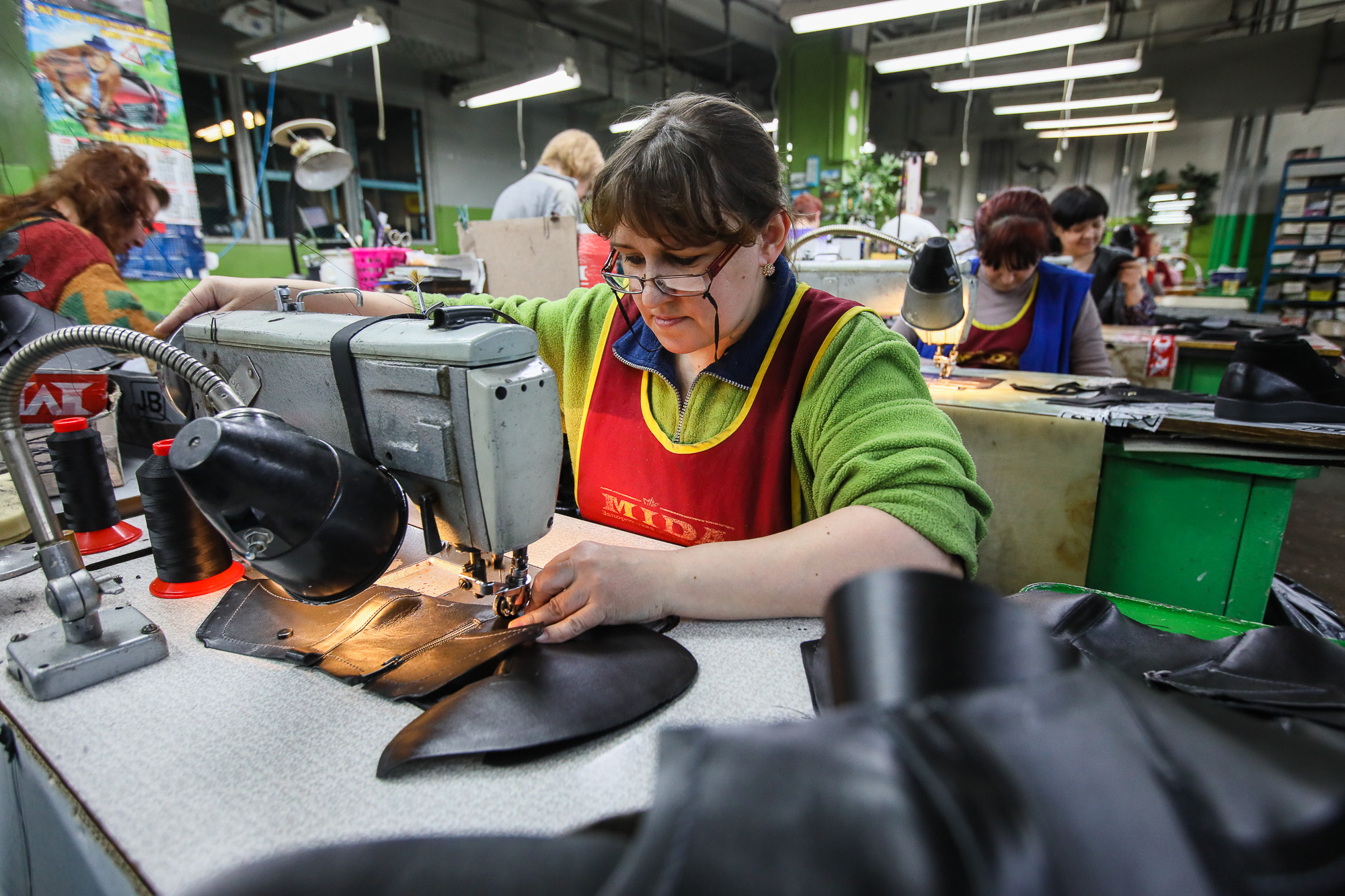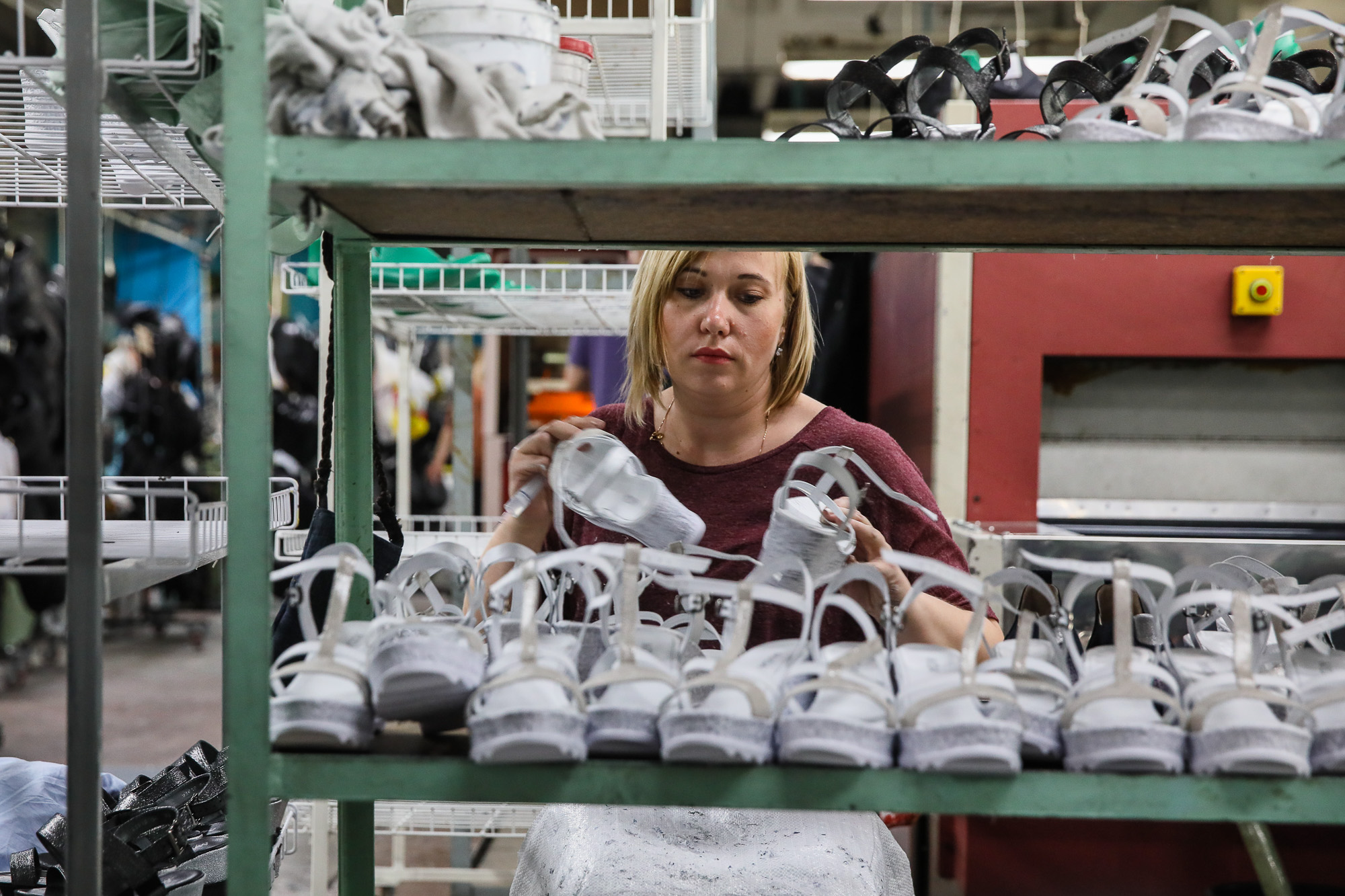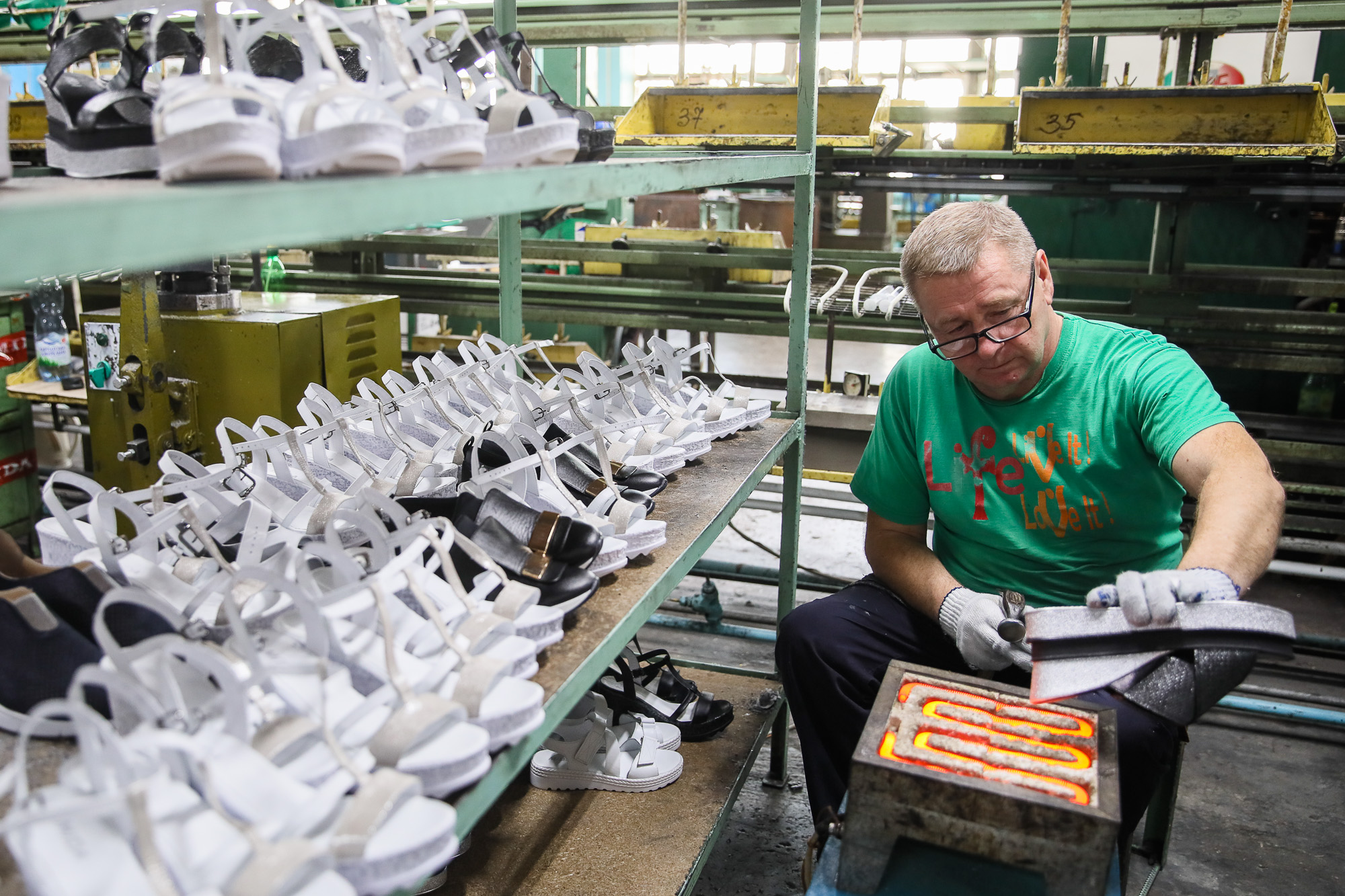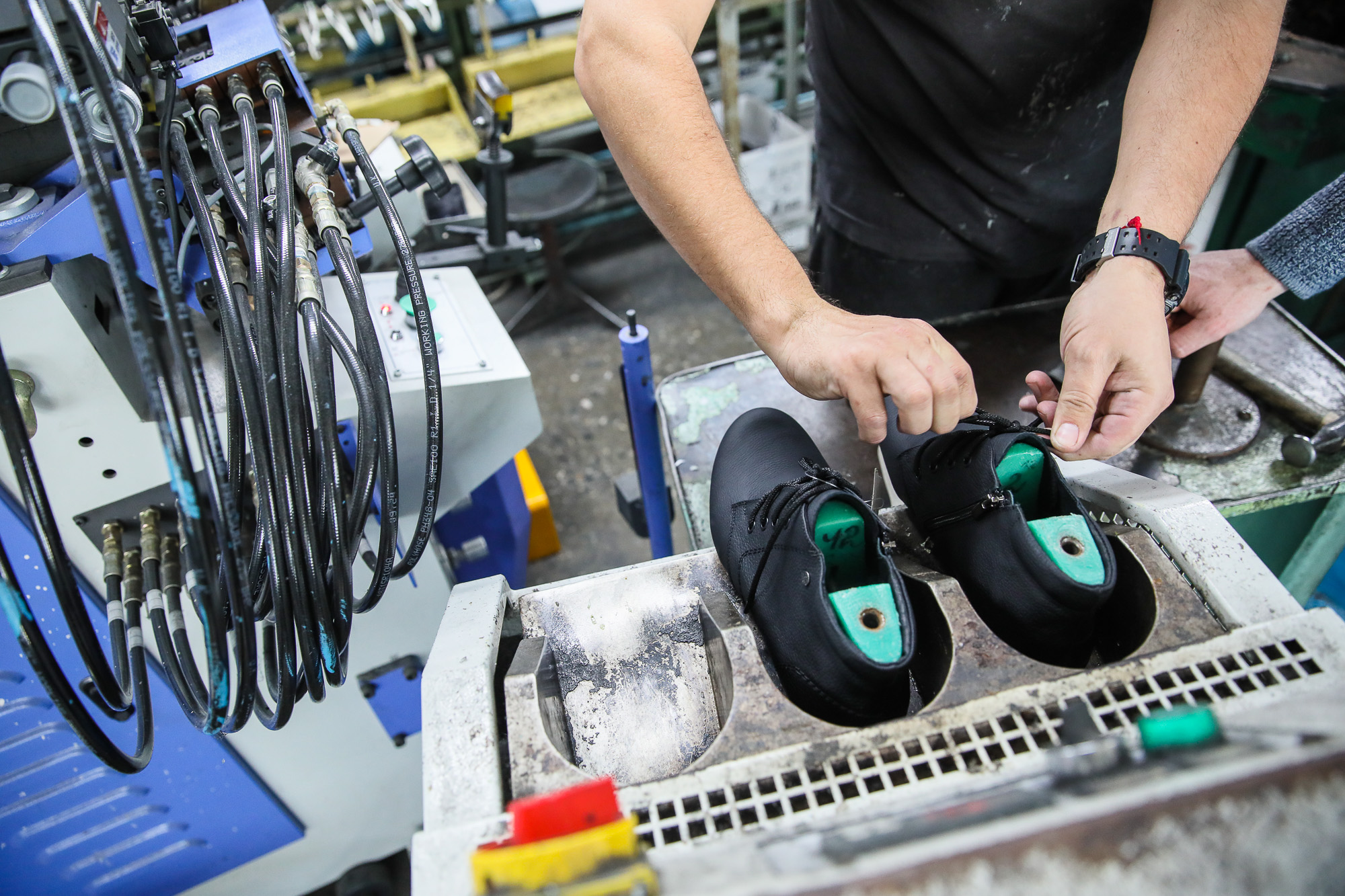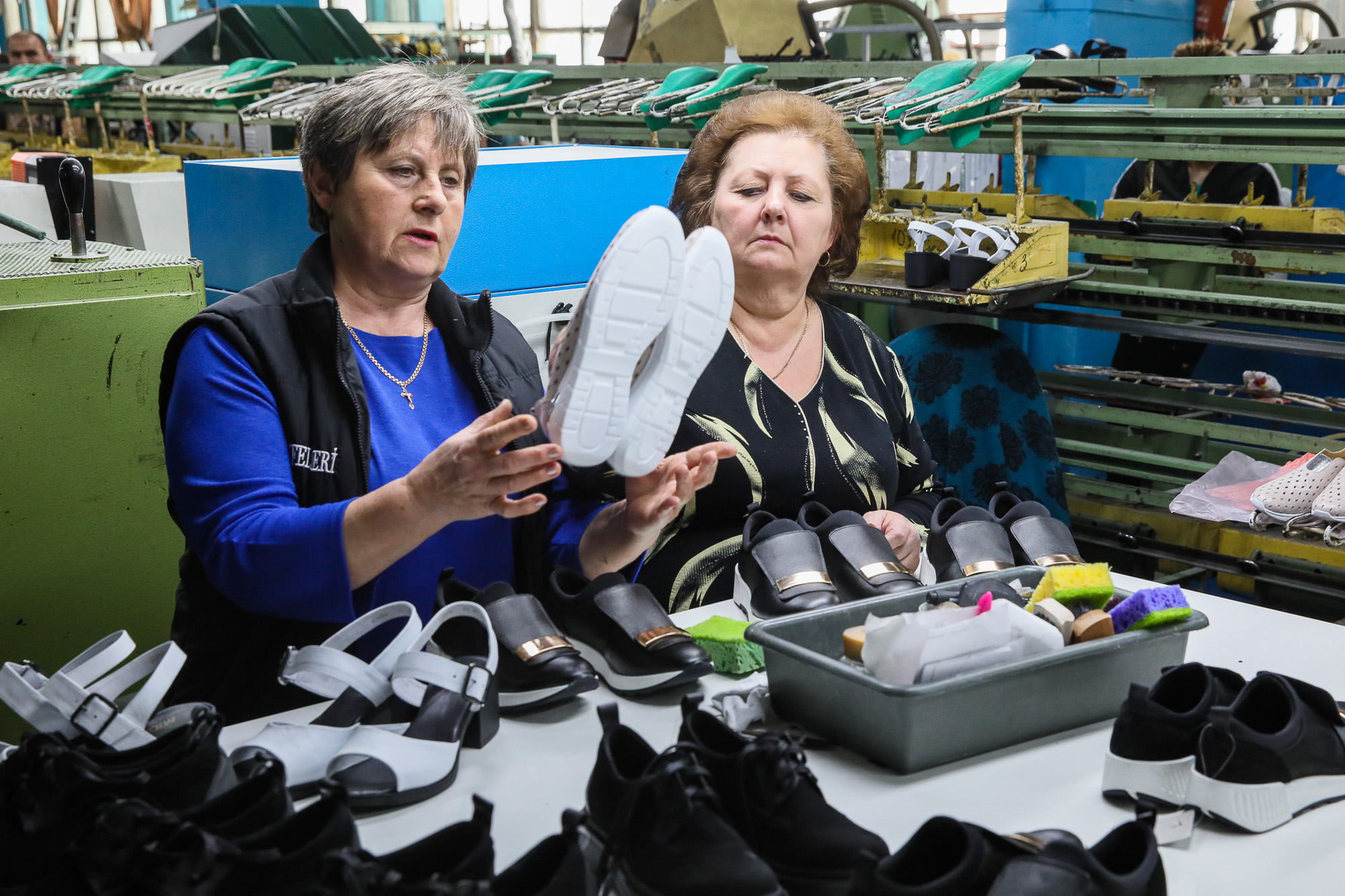ZAPORIZHIA, Ukraine – On the edge of Ukraine’s southeastern city of Zaporizhia, behind a concrete fence, lies a shabby brutalist building in which hundreds of people make shoes.
Since 1992, that building — a Soviet-era footwear factory — has belonged to a local firm called Mida. It employs 1,800 locals in all stages of the shoemaking process: designers, textile workers, sole and upper makers.
Together with another, smaller 500-person factory in the nearby town Vasylivka, Mida produces almost 1 million pairs of shoes every year.
After being sketched, cut, glued and stitched in Zaporizhia, the company’s shoes are sold in online stores like Amazon and Rozetka, and in 100 brick-and-mortar shops across Ukraine. It is estimated that Ukraine has about 20 such big footwear factories.
Their shoes mostly adorn the feet of Ukrainians, but are also sold abroad.
‘Leather equals quality’
Mida is owned by four people, but only one of the founders — Vladimir Giba — is a public figure. Giba also serves as the commercial director of the company. He considers Mida a “low-priced, but diligent” shoemaker.
“Over the years, we’ve created a good brand, we’ve had a solid retail network. Now we’re just working hard,” Giba said in an interview. His factory makes classical, casual, athletic-style, and winter shoes from “a natural material that many appreciate.”
That natural material is cow leather. Dmitry Zubov, who gave the Kyiv Post at tour of the factor, could not praise leather enough.
“We have been working with it for 20 years. Leather equals quality,” he told the Kyiv Post.
Zubov is the son of one of the co-founders. But he’s also held many different jobs in the factory. He has worked as a designer, a cutter, and now he is responsible for the factory’s leather imports from Turkey.
“Everything we do here is thought-through. I’ve met people who wear our shoes for six years,” he said. “So compared to China, we are Louis Vuitton.”
Currently, the cheapest shoes in Mida’s online stores cost $24 (men’s neakers) and the most expensive — $100 (women’s high boots). Despite the low price, Mida is so confident of the durability of its shoes that it gives a lifetime warranty for its soles, which it will mend or change for free at any time.
Apart from shoes, the factory sells shoe parts to other Ukrainian manufacturers and abroad — to footwear producers in Belarus, Moldova, and Poland. The factory even has a separate subsidiary called JB Plast to sell them.
Creating a collection
The Mida factory works with preorders, so it starts making shoes several seasons in advance. This April, for example, the factory is already working on shoes for next winter.
The whole process starts with designers and top managers deciding on what could be popular next season, what forms and colors. The executives go to Italy, talk with shoemakers and bring recommendations — and fashion magazines — to Mida’s 30 staff designers.
“We study the magazines, notice what’s popular and think how to make it work for Ukraine’s market and our factory,” says Olena Sakhno, one of the designers.
“Then we come up with our designs,” she adds, pointing to a drawing on the screen of her computer, which still uses the nearly 25-year-old Windows 95 operating system.
These designs become the factory’s next collection of shoes. Based upon them, shoemakers make “lasts,” or plastic models of human feet, on which masters make a shoe. Once lasts of all sizes have been produced, laborers — most of the employees of the factory — create a trial batch of shoes and pack them into boxes.
That trial batch travels to Kyiv or to former Soviet countries, where it is displayed to potential buyers — Mida franchises, storage depots that usually work with Mida, and various individual entrepreneurs. They place orders, and the factory in Zaporizhia starts making the pre-ordered shoes. Unpopular designs are rejected and forgotten at this stage.
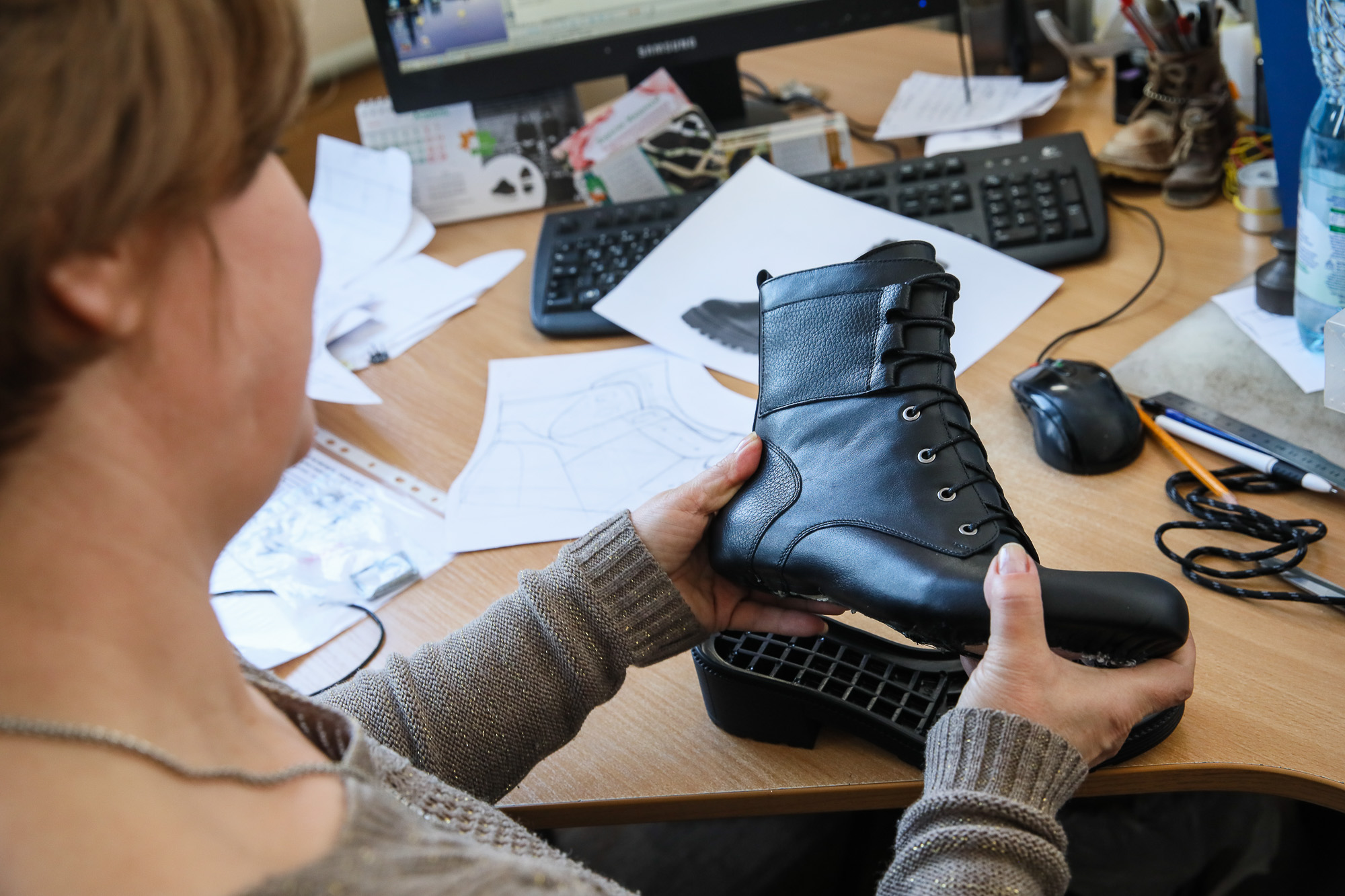
Olena Sakhno, a designer employed by the Mida footwear factory, talks to the Kyiv Post on April 9, 2019, explaining how she creates her designs. (Volodymyr Petrov)
Domestic popularity
Mida has long been popular in its home town of Zaporizhia, where its red storefront logo can be seen in most shopping malls. Today, however, the company also aims to become a national brand.
To achieve this goal, in 2012 the factory began allowing entrepreneurs to franchise its stores. And it worked: the company’s red logo began to spread rapidly across the country. Now, it has over 100 shops in 47 Ukrainian cities and towns. Around 20 of them are in Kyiv.
Spokesperson Yuriy Grytsenko, a 20-year veteran of Mida, attributes this success to the company’s liberal conditions for its franchises. The company asks very little: keep the price reasonable, use official colors and logos, and have a 70–80 percent share of Mida products on the shelves.
“Actually, that’s when the competition starts,” Grytsenko adds. “It’s when in our stores, on the same shelves, 20 percent of the shoes are made by other Ukrainian brands that also have low prices.”
According to Grytsenko, these are mostly brands from Kyiv, Kharkiv and Dnipro. Most produce “shoes of the same price” and use soles made by Mida under the JB Plast brand. In the end, that’s a win-win, he concluded.

This footwear factory employs 1,800 locals in all stages of the shoemaking process: designers, textile workers, sole and upper makers. (Volodymyr Petrov)
Mida has also tried to go abroad: entrepreneurs opened franchises in the United States, the UK, Poland, the Czech Republic and Israel at various times. But the shops never took off and soon closed.
“It’s hard to enter a market that is already occupied by local producers,” commercial director Giba explains. But he admits that it’s also difficult in Ukraine — even with Mida’s broad retail network and particular niche.
The biggest problem, however, is the grey market, when some traders import shoes illegally without paying taxes. For this reason, even shoes from major global brands can be sold in Ukraine cheaply.
“It makes it hard to compete,” Giba says. “But the volume that we’re producing is not that big for our country. And with the reputation that we’ve built, it allows us to sell everything that we make.”
